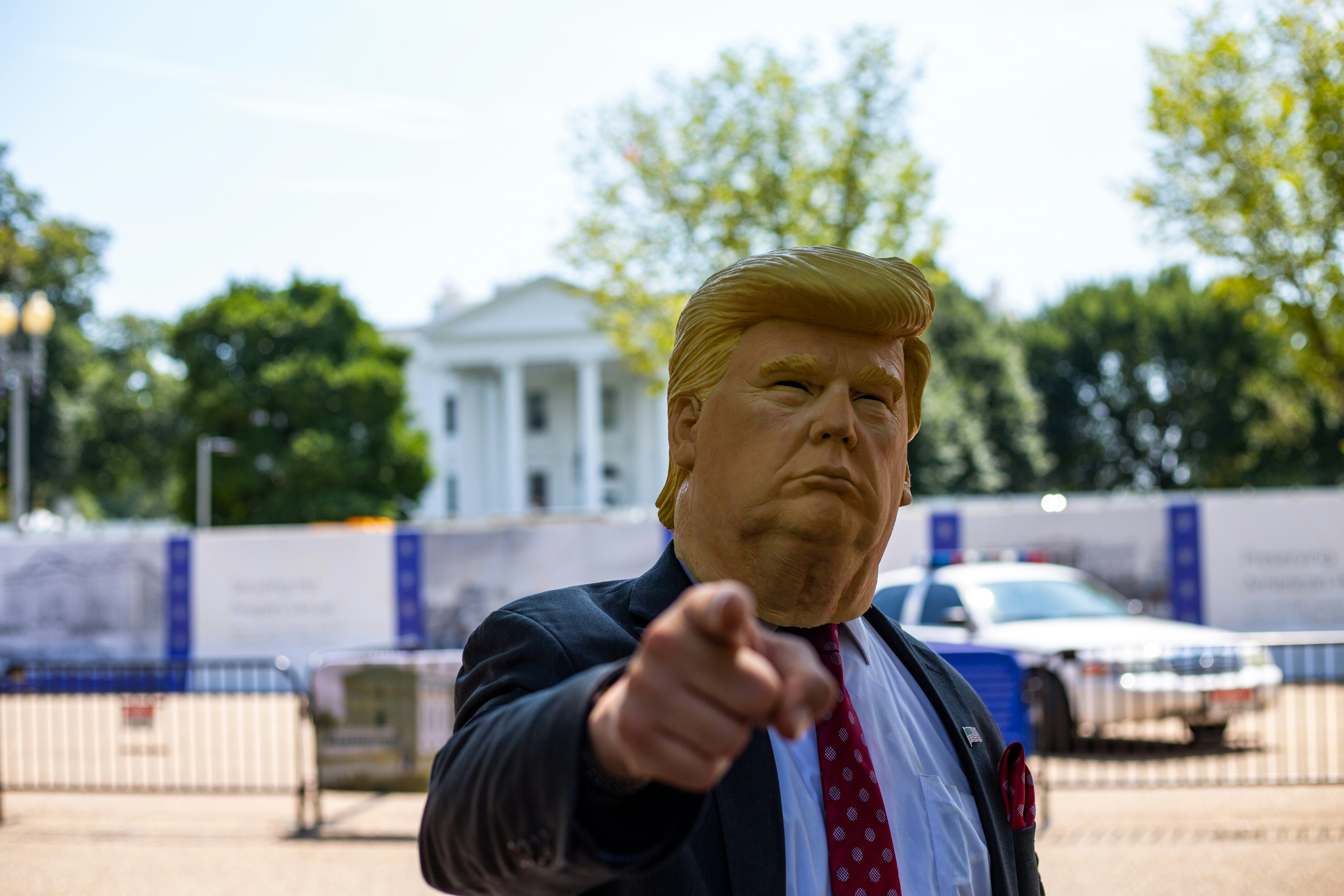Now Reading: A Critical Analysis of Donald Trump’s Presidency: Mid-2025 Reflections
- 01
A Critical Analysis of Donald Trump’s Presidency: Mid-2025 Reflections

A Critical Analysis of Donald Trump’s Presidency: Mid-2025 Reflections

Introduction
As we reach the midway point of Donald Trump’s second term in June 2025, a critical reflection on his presidency becomes essential for understanding its broader implications. Since assuming office, Trump’s administration has been marked by controversial policies, highly publicized events, and a deeply polarized political landscape. This unique situation prompts an evaluation of his tenure, not only to gauge his effectiveness but also to assess the historical position he may occupy in the annals of U.S. history.
Key events have undeniably shaped Trump’s presidency, including his responses to domestic and global crises, his stance on immigration, and his management of economic issues. His handling of the COVID-19 pandemic, in particular, has generated substantial debate among scholars and political analysts, with various perspectives regarding its impact on public health and the economy. Furthermore, the administration’s foreign policy decisions, especially those involving trade agreements and diplomatic engagements, have raised questions about their long-term ramifications for American leadership in the world.
This post aims to provide a comprehensive analysis of the implications of Donald Trump’s policies and actions during his presidency thus far. It seeks not only to evaluate his effectiveness in governance but also to explore the underlying factors contributing to a significant public discourse about the possibility of his presidency being among the least favorable in U.S. history. By critically examining his tenure leading up to mid-2025, we hope to illuminate the complexities of his leadership and the varying perceptions held by the American public, as well as political analysts.
The Scandals of the Past: Impeachments and Legal Troubles
During his presidency, Donald Trump faced unprecedented scrutiny, primarily due to his involvement in two impeachments and numerous legal challenges that have shaped both his public image and political landscape. The first impeachment occurred in late 2019, stemming from accusations of abuse of power and obstruction of Congress. The House of Representatives charged Trump with soliciting foreign interference in the 2020 election by urging Ukraine to investigate rival Joe Biden. This scandal not only polarized public opinion but also deepened the existing partisan divide, illustrating the contentious environment of contemporary American politics.
The Senate acquitted Trump in early 2020, allowing him to continue his term without removal from office. However, the implications of this impeachment lingered, setting a precedent for future presidential conduct and raising questions about accountability. Following the events surrounding the January 6 Capitol riots in 2021, Trump faced a second impeachment for incitement of insurrection. This event not only underscored the gravity of his actions post-election but also reflected a significant shift in public sentiment, with many Americans expressing disapproval of his rhetoric and conduct leading to the riot.
Furthermore, Trump’s legal troubles have only intensified since leaving office, with over 34 criminal charges presently affecting his political viability and public perception. These charges cover a range of alleged offenses, including financial fraud and obstructing justice. The intertwining nature of his legal battles with his political narrative has drawn attention to the broader implications of leadership integrity. As he moves into his second term, the ramifications of these impeachments and ongoing legal controversies will likely continue to influence the political discourse in the United States, shaping both his legacy and the responses of his political opponents.
Public Image: From Infamy to Fame?
Throughout his presidency, Donald Trump has navigated a uniquely tumultuous relationship with the media, ultimately influencing public opinion and reshaping his public image. The paradox of his mugshot, which garnered significant media attention, is a case study in how controversy can be strategically leveraged for political gain. This incident highlights how Trump’s infamy, often characterized by divisive rhetoric and tumultuous policies, can also morph into a form of fame that energizes his base and attracts public support.
The media landscape has played a pivotal role in shaping perceptions of Trump. His confrontational approach often resulted in sensational headlines, generating extensive coverage that simultaneously vilified and humanized him. The mugshot, an emblem of his legal controversies, transformed from a mere depiction of law enforcement into a powerful symbol of resilience in the face of adversity. For many supporters, it validated their beliefs, reinforcing the idea that Trump remains an outsider facing unfair treatment by the establishment. This shift illustrates the complex dynamics between media portrayal and public sentiment, where negative press can be reframed as persecution.
Moreover, Trump’s ability to engage with controversy has further solidified his brand. The celebrity factor cannot be underestimated; Trump’s presence in media narratives continuously keeps him in the public eye, fueling discussions about his policies and political aspirations. He successfully capitalizes on moments of infamy, translating them into opportunities that propel his rhetoric and enhance his visibility. This strategy has proven effective, as evidenced by polling data indicating that controversial moments often correlate with spikes in support from his voter base.
Ultimately, the trajectory of Trump’s public image highlights an ongoing paradox: his ability to oscillate between infamy and fame in the public consciousness may redefine conventional political norms. As the interplay of media portrayals and public opinion continues to evolve, Trump’s unique positioning in the political landscape risks becoming a hallmark of modern political discourse.
Response to Protests: Military Intervention in California
During his presidency, Donald Trump faced numerous protests across the nation, particularly those addressing issues of illegal immigration and calls for racial justice. One notable event occurred in California, where a series of emotionally charged protests led Trump to authorize a substantial military presence in the state, a decision that sparked widespread debate and controversy. The deployment aimed to restore order and address what Trump referred to as a growing threat to law enforcement and public safety. Critics argued that such military intervention was an excessive response, reflecting a leadership style that favored force over dialogue.
Assessing the effectiveness of deploying military personnel in California necessitates analyzing its immediate impact on the protests and the longer-term implications for law and order. While the presence of armed forces may have temporarily quelled unrest and maintained a degree of order, it also escalated tensions between protestors and law enforcement officials. This approach seems to undermine opportunities for meaningful conversation and de-escalation strategies, which could have addressed the underlying issues fueling the protests. Alternatives to military intervention, such as engaging community leaders and employing non-violent tactics, might have fostered better relations and encouraged a more constructive dialogue surrounding the contentious topics of immigration reform and social justice.
Moreover, Trump’s decision to deploy the military highlights his broader leadership style characterized by a willingness to take direct and assertive actions in response to crisis situations. Critics contend that this approach reflects a lack of understanding of the complexities surrounding social unrest, as historical trends indicate that militarization can provoke further dissent rather than resolve it. In essence, this incident not only exposes the challenges Trump faced when managing civil unrest but also serves as a critical reference point for evaluating his presidency’s overall approach to governance and public discourse.
The Influence of Advisors: Project 2025 and White Nationalism
The landscape of Donald Trump’s presidency has been significantly shaped by a cadre of advisors whose ideologies and affiliations have raised questions about the direction of his administration. Among these influences, Project 2025 emerges as a pivotal initiative, embodying a vision that many critics argue is intertwined with white nationalist sentiments. This project, primarily orchestrated by key figures within Trump’s inner circle, seeks to implement a series of policy reforms that resonate with far-right ideologies, impacting various aspects of governance in the United States.
The architects of Project 2025 have advocated for sweeping changes in immigration, education, and law enforcement policies, which some believe could further entrench racial divides. The presence of advisors with ties to extremist groups has fueled concerns that these proposed reforms might be designed not merely for efficiency, but to reaffirm and promote white nationalist perspectives under the guise of patriotism and national interest. The urgency of these recommendations reflects ongoing cultural tensions in America, where discussions around race and identity are increasingly polarized.
Furthermore, the advisors’ affiliations and networks provide insight into the motivations behind Project 2025. Many of these individuals are connected to previous far-right movements, hinting at an ideological continuity that extends beyond mere political expedience. Trump’s presidency can be viewed as a platform for these advisors to articulate their vision for America, one that aligns with their understanding of national identity, potentially marginalizing diverse perspectives.
Through analyzing the influence of these advisors, it’s clear that their role goes beyond strategic counsel; they shape narratives and policies that challenge foundational democratic principles. In this context, Project 2025 serves as a crucial case study of how the selection of advisors impacts not only the executive branch but also the broader socio-political fabric of the nation. This association has implications for the future of governance in the United States, as it raises urgent questions about the intertwining of politics and extremist ideologies.
The Disastrous Partnerships: Aligning with Ron DeSantis
The alignment between Donald Trump and Florida Governor Ron DeSantis has raised eyebrows within political circles. While both figures initially appeared to share a vision that resonated with a significant segment of the Republican base, their partnership has been marred by controversy and a series of political missteps, particularly during DeSantis’ recent Iowa campaign. DeSantis has faced criticism for his financial mismanagement, which not only hampered his own campaign viability but also risked tarnishing Trump’s brand by association.
Trump’s strategy of uniting with DeSantis was anticipated to bolster his standing among hardline conservatives. Initially, the alliance seemed promising, especially as DeSantis positioned himself as a strong candidate in the Republican primaries. However, as financial irregularities became evident, the fallout raised concerns about DeSantis’ leadership and capabilities. Such mismanagement not only reflected poorly on DeSantis himself but also posed a serious threat to Trump, as perceived failures within the partnership could inadvertently weaken his support amongst party factions.
The political ramifications of this alliance extend beyond mere financial issues. DeSantis has also attracted scrutiny for his controversial policies and governance style, which have sparked backlash among various voter demographics. As a result, Trump risks becoming collateral damage in the eyes of wider audiences disillusioned by DeSantis’ actions. This situation serves as a stark reminder of how strategic partnerships must be carefully considered, as poorly aligned alliances can adversely impact one’s political standing.
As 2025 approaches, the implications of Trump’s partnership with DeSantis will likely continue to unfold. Observers will be keenly watching to see if Trump can distance himself from DeSantis’ controversies, or if he will remain entangled in a partnership that may jeopardize his credibility and leadership within the Republican Party.
Character and Leadership: The Reflection on Trump’s Inner Circle
The character and leadership style of former President Donald Trump have been significantly shaped by the individuals surrounding him. His inner circle has often been regarded as a reflection of his governance and moral compass, leading to various interpretations regarding his approach to leadership. From the onset of his campaign in 2015 to his presidency, Trump’s relationships with certain controversial figures have drawn considerable public scrutiny, influencing perceptions of his character.
Notable individuals such as Steve Bannon, a former Chief Strategist, and Rudy Giuliani, Trump’s personal attorney, have played pivotal roles in shaping his policies and public persona. Bannon’s influence, marked by his populist and nationalist rhetoric, resonated deeply within the Republican base, portraying the idea that the elite were disconnected from the general populace. This populism contributed to a divisive atmosphere, often promoting a narrative that the establishment was a common enemy. Bannon’s strategies not only affected Trump’s political approach but also highlighted a framework that prioritized loyalty over conventional political norms.
Conversely, figures like John Bolton, who served as National Security Advisor, depicted a contrasting viewpoint on leadership within Trump’s government. Bolton’s hawkish stance on foreign policy led to direct clashes with Trump’s more isolationist inclinations. This conflict underscored a broader theme of discord in Trump’s leadership style—often characterized by a clash of ideologies within his administration, suggesting that his character—as shaped by his associates—could both drive and hinder a cohesive governance strategy.
Ultimately, examining Trump’s inner circle reveals critical insights into his leadership approach, emphasizing how the character of a leader can be profoundly influenced by their chosen confidants. The controversial alliances he maintained have had lasting implications, reflecting a complex interplay between individual backgrounds and overall governance. This dynamic often foreshadowed the tumultuous nature of his presidency, characterized by loyalty, division, and the ongoing struggle between various ideologies.
The Fallout with Elon Musk: Consequences of Political Relationships
The relationship between Donald Trump and Elon Musk has been a topic of significant discussion throughout Trump’s presidency and beyond. Their dynamic has evolved considerably, especially in the context of Musk’s increasing prominence in the technological and business sectors. Initially, Trump and Musk appeared to share mutual interests, particularly in the realms of technology and innovation. However, a noticeable fallout emerged as political landscapes shifted and public sentiments evolved.
One of the most perceivable consequences of this estrangement is the impact on Trump’s public perception. Musk, as the CEO of Tesla and SpaceX, holds substantial influence and credibility in the innovation-driven economy. His remarks regarding Trump’s policies and leadership style have inevitably swayed public opinion. For instance, Musk’s critiques on climate change policies and their implications on innovation have resonated with a diverse audience, potentially undermining Trump’s efforts to maintain a favorable image among environmentally conscious voters.
Moreover, the fallout has implications for Trump’s effectiveness in navigating the political landscape. With Musk’s substantial following and capacity to mobilize opinions through social media, his disapprovals may create distance not only between the two figures but also between Trump and voters who align with Musk’s perspectives. This rift becomes particularly pronounced when examining Musk’s views on regulatory frameworks and government intervention in business, areas where Trump has historically advocated for more lenient policies.
The interaction between Trump and Musk serves as a reflection of the broader narrative surrounding political relationships in the contemporary climate. A misalignment between influential figures can lead to shifts in public allegiance, making it crucial for leaders to manage such relationships effectively. The implications of the fallout between Trump and Musk are multifaceted, highlighting the importance of political alliances and their consequences on leadership effectiveness during and beyond the Trump administration.
Gavin Newsom: The Emerging Challenger and Critique of Trump
As the political landscape evolves in the United States, California Governor Gavin Newsom has emerged as a noteworthy challenger to former President Donald Trump. Known for his progressive policies and notable leadership during crises such as the COVID-19 pandemic, Newsom’s critiques of Trump’s presidency have garnered significant attention. He has consistently positioned himself as a counterweight to Trump’s conservative agenda, particularly in areas such as climate change, healthcare, and immigration reform.
Newsom’s responses to Trump’s policies have been marked by a strong emphasis on social justice and environmental sustainability. For instance, while Trump downplayed the urgency of climate change, Newsom has implemented aggressive environmental policies in California, geared towards reducing carbon emissions and promoting renewable energy. His administration’s distinct approach not only highlights the stark differences between his governance style and that of Trump, but it also resonates with a segment of the electorate that prioritizes climate action.
Furthermore, Newsom’s critique extends to Trump’s handling of public health. By advocating for responsive public health policies and equitable healthcare access, Newsom underscores the failures he perceives in Trump’s approach during the pandemic. This positions him as a persuasive figure within the Democratic Party, appealing to a base that values comprehensive healthcare reform as a cornerstone of political discourse.
As the nation looks toward the 2028 presidential election, Newsom’s emerging profile serves as both a reflection of the contemporary Democratic ethos and a challenge to Trump’s ideologies. The effectiveness of Newsom’s critiques, alongside his proactive policy initiatives, could redefine the electoral dynamics as he seeks to galvanize support from a diverse voter base. His potential as a leader hinges not only on his ability to engage in thoughtful critiques of Trump’s legacy but also on his vision for America’s future.
Conclusion: The Stability of Trump’s Second Term
The assessment of Donald Trump’s presidency, particularly during his second term, calls for a nuanced understanding of the dynamics at play in American governance. As Trump navigates the political landscape of 2025, his administration grapples with a myriad of challenges that test both his leadership and the resilience of the institutions he oversees. One of the primary concerns is the ongoing polarization in the American political system, which has only intensified during his tenure. Such division raises questions about the stability of his presidency and the potential impact it might have on the future political landscape.
Throughout his presidency, Trump has emphasized his commitment to certain core policies, including economic revitalization, immigration reform, and a robust foreign policy stance. However, his approach has often led to friction, not only with political adversaries but also within his party’s ranks. The fragmentation of support could pose a significant obstacle as he attempts to solidify his legacy. Furthermore, ongoing investigations and legal battles present additional vulnerabilities, challenging the perception of stability within his administration.
Trump’s ability to maintain support hinges on how effectively he addresses crucial issues that resonate with the American public. As his presidency progresses, questions surrounding his leadership style and decision-making processes become increasingly salient. Will he adapt and respond to the evolving needs of the electorate, or will he remain steadfast in his approach at the risk of alienating key voter blocs? Such considerations are crucial in evaluating the sustainability of his policies and the overall trajectory of his second term.
In sum, the reflections on Trump’s presidency highlight a complex interplay between stability and challenge. His capacity to navigate these dynamics will ultimately shape the legacy he leaves behind as well as the future of governance in the United States. The American public and future historians will undoubtedly scrutinize this period, pondering the implications of Trump’s leadership on both national and global scales.
















